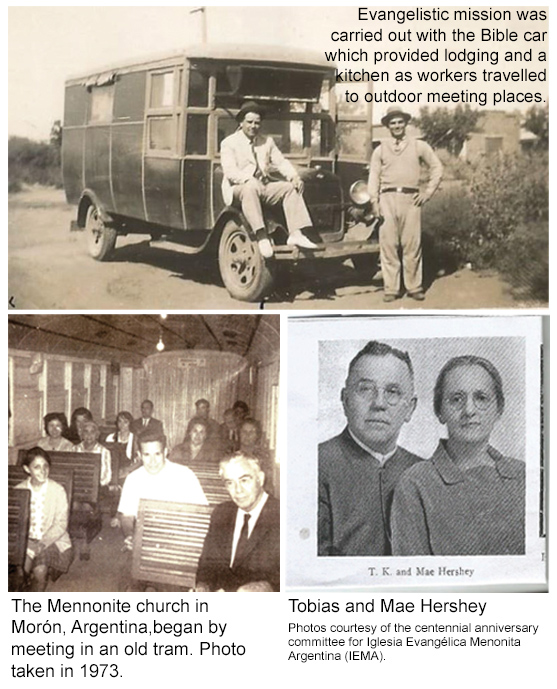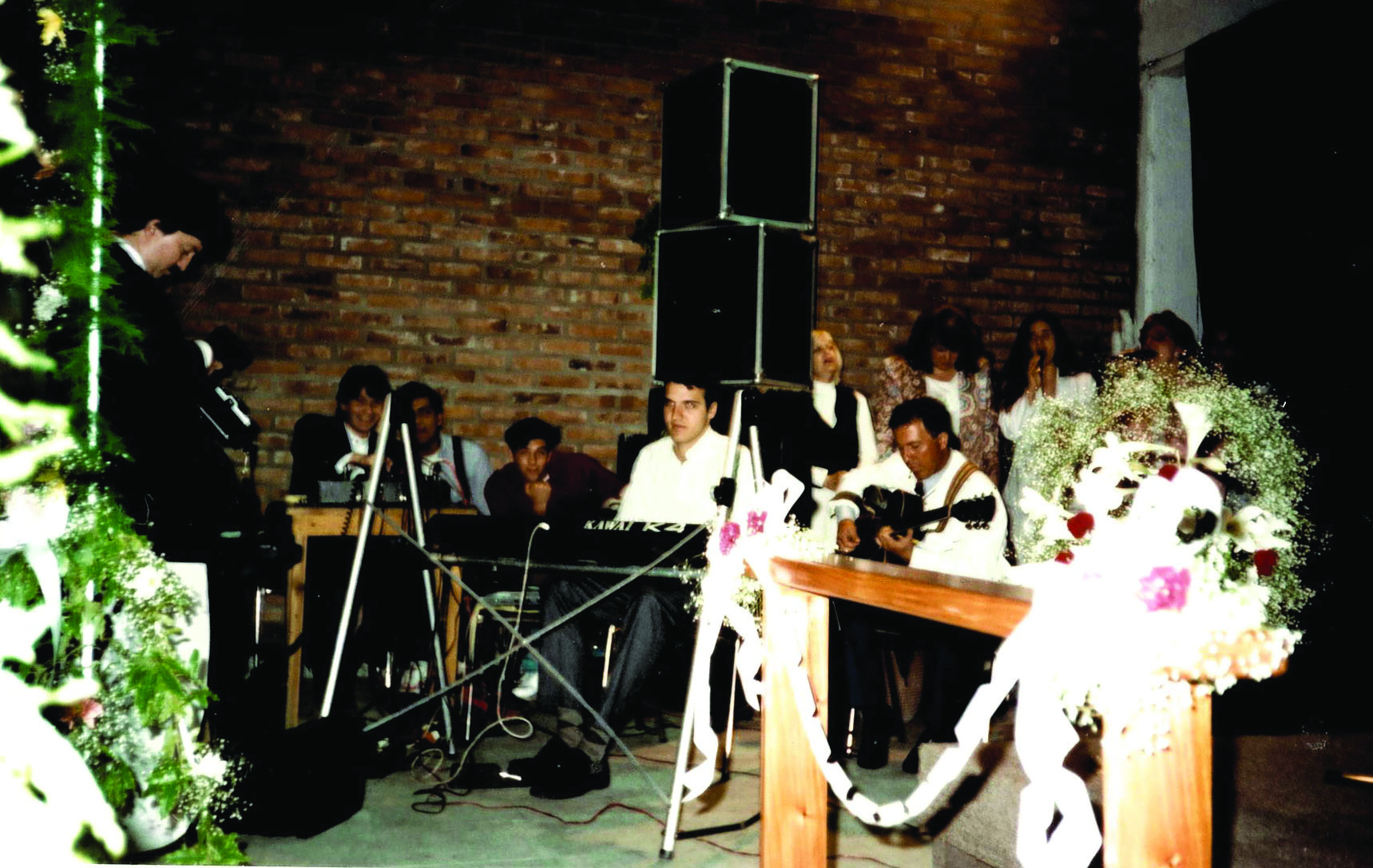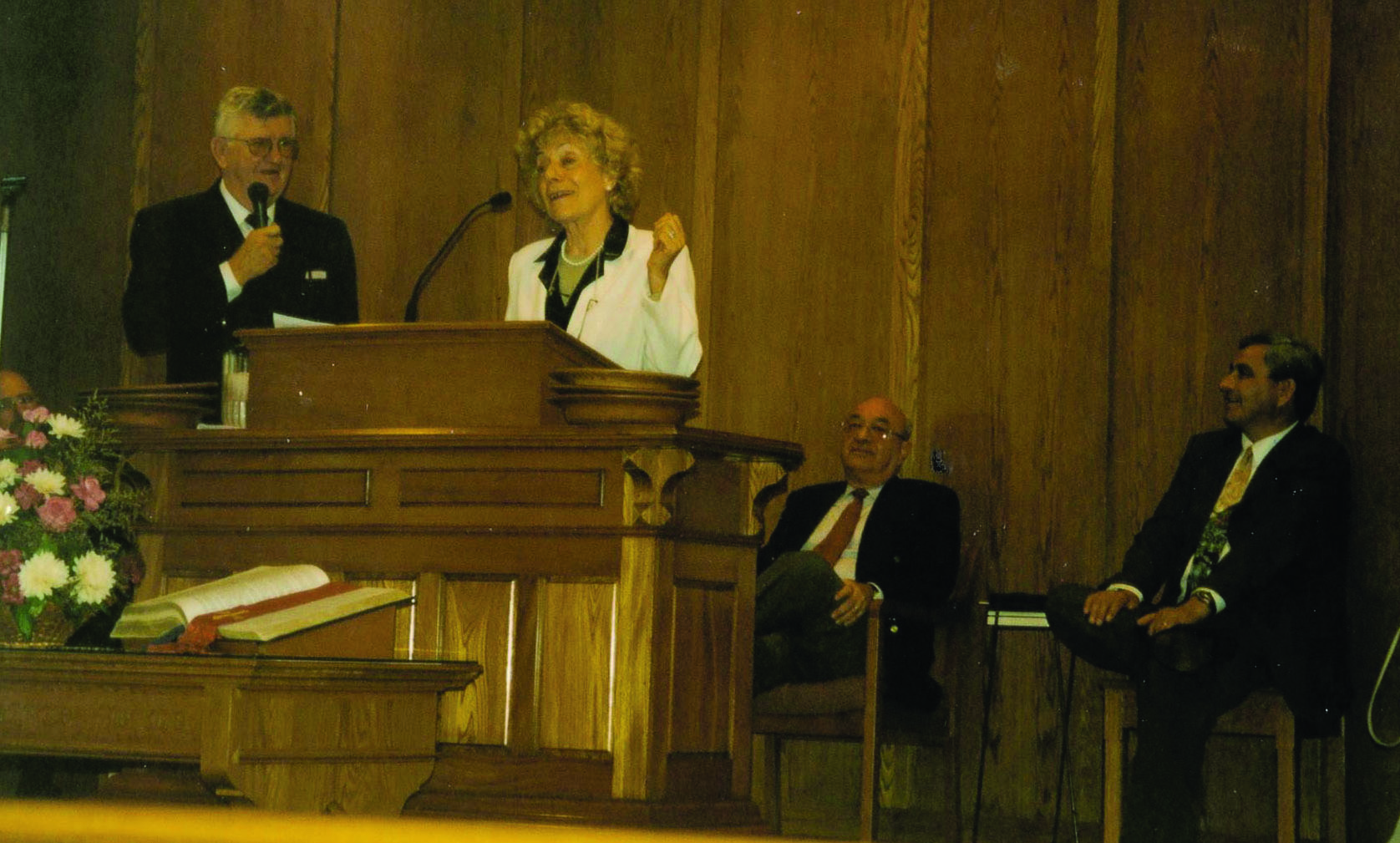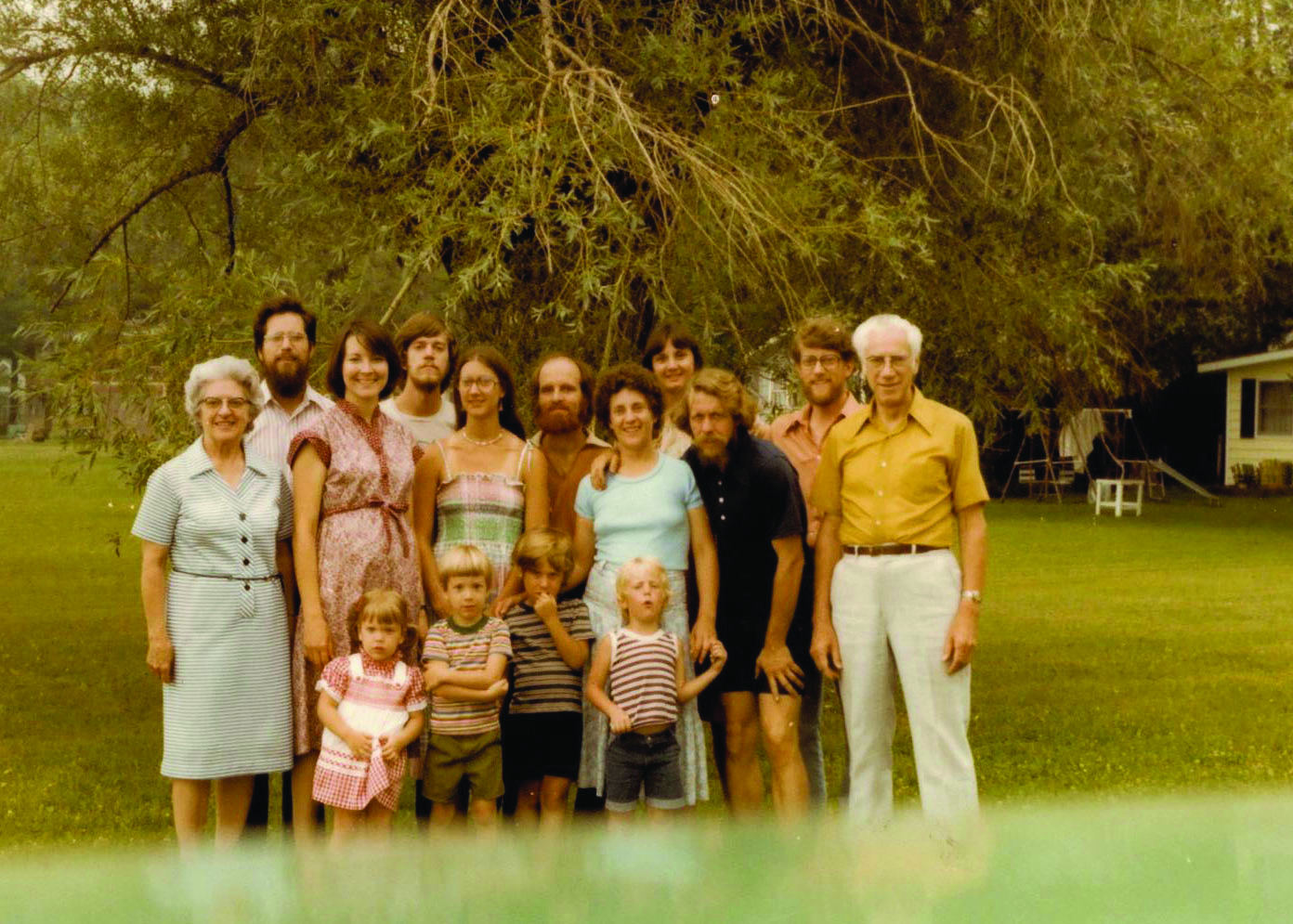Iglesia Evangélica Menonita Argentina (1917–2019)
We, the members of the Iglesia Evangélica Menonita Argentina (IEMA), are celebrating the 100th anniversary of the arrival of the first missionaries [from USA], Joseph Shank and his wife Emma E. Shank; and Tobias Hershey and his wife Mae E. Hershey, whose work would change forever the lives of many people. The current presence of 50 congregations, with 3600 members in different provinces of the country, is a living testimony of their work.
They arrived on the morning of September 11, 1917, at the Port of Buenos Aires, after a four weeks’ journey by ship. They were welcomed by Methodist and Baptist representatives, as well as the Christian and Missionary Alliance, and the Argentine Bible Society, who served as God’s instruments in counselling and guiding them as they took their first steps, and eventually when they established themselves to begin their work in the city of Pehuajó, Province of Buenos Aires.
Their first year and a half was devoted to learning about the country, the people and their customs, the Spanish language, making visits and field trips to discern their permanent place of residency. Furthermore, Joseph and Emma Shank drew strength and confidence from God as they rose to his challenge, according to Revelation 3:8, “He has placed before you an open door that no one can shut.”
Also, Tobias and Mae Hershey demonstrated such enthusiasm and faith, showing the same willingness as the Apostle Paul expressed in Romans 1:15: “That is why I am so eager to preach the gospel also to you.” This phrase characterized the first missionaries at the outset of their work, for they were relentless servants who with boundless determination travelled the country on their task.
All of this influenced the other missionaries that came afterwards to work with the Argentine pastors. The first ones were Albano and Querubina Luayza, faithful exponents of the Protestants (called evangélicos in Argentina) originally from the Christian Alliance, who bravely proclaimed in streets and squares that Christ meant hope for a new and true life.
Firstly, we are grateful to God, and to the members of the [Mennonite] church in the United States, and later Canada, for their interest in extending missionary work to South America.
Celebrating the 100th anniversary

Thus on 16 September 2017, a commemorative event was held outdoors at the same place where the ship had arrived, now a beautiful neighborhood called Puerto Madero in the capital city. Present at the event were MWC president J. Nelson Kraybill, John Lapp, Madeline Maldonado and Linda Shelly of the Mennonite Mission Network, together with other representatives of the local Iglesia Evangélica Menonita; furthermore, several Buenos Aires city government officials also attended, as well as Mennonite delegates from neighbouring countries, representatives from 18 congregations, Mennonite members, and the pastors who had organized this special event.
That evening, we also shared a commemorative meal with a large group of national pastors, visitors and dignitaries. On 17 September 2017, in appreciation for the presence of representatives from the mother church, a missionary conference was held in the modern facilities provided by Mr. Nardini, mayor of Malvinas Argentinas. We thank the Lord and those brothers for their goodness. They inspire us to continue serving the Lord with the same love, sacrifice and courage of the early Christians and our XVI century Anabaptist forebears. We proclaim the gospel of hope in Christ and his kingdom until the second coming of the Lord to the earth.

Origins of the work in Pehuajó (1919)
On the recommendation of the Bible Society, it was decided that the work should begin in the city of Pehuajó; its literature evangelists, who traveled throughout the country to spread the Word of God, knew that there wasn’t any evangelistic work in the western area of the Province of Buenos Aires. The first missionaries arrived there 21 January 1919. Thus it was on 26 January 1919 that they sang joyfully and with gratitude, “Nearer, my God, to Thee” in the first worship service, as Ernesto Suárez recounts in his book on the 50th Anniversary [of the Argentine Mennonite Church]. We note with joy and gratitude that we personally knew the first converts; among them, some members of the Cavadore family, especially Pablo, Anita, María and Santina, and Grandma [Nicolasa] Fattone (a relative of ours). These are people who believed and continued to be faithful all their lives, serving the Lord with all their strength.
Moving on toward the western towns
Later the gospel was brought to Trenque Lauquen, Carlos Casares, Tres Lomas, Bragado and many other small towns, where churches were planted, small groups of Christ’s disciples. Furthermore, kindergartens were opened, as well as first aid centres, a children’s home, and, years later, a print shop.
Also, a Bible School was established in Pehuajó, and was later moved to the city of Bragado. Eventually, it was moved to Montevideo, Uruguay, and became known as the Seminario Evangélico Menonita de Teología, with students joining from the Mennonite colonies and conferences in Uruguay, Brazil and Paraguay. This meant a significant effort, carried out under the direction of missionary Nelson Litwiller, our brother and visionary leader, who was also closely involved in the settlement of those escaping from [World War II in Europe]. These settlers disembarked in Montevideo, Uruguay, to establish three colonies in our neighbouring country, with whom we have been blessed with fraternal ties up to the present.
In a very useful study, professor Delbert Erb prepared a synthesis of the four stages in the history of the Mennonite Church in Argentina, explaining its development in the following way:
1. First stage: The mission and its missionaries (1919–1954)
2. Second stage: The transition (1954–1989). This period led to the end of the [US] mission, during which foreigners and Argentines worked together. The Mission introduced new principles to be followed:
(a) self-governance; b) self-financing; and c) outreach.
Then the following missionary projects were developed:
(i) the Patagonian Project; (ii) the Northern Argentine Project (PROMINOA); (iii) the Central Region Project (VEMZO); (iv) the Church of Córdoba Project (EMIDOCOR).
3. Third stage: National organization

4. Fourth stage: The reorganization of IEMA into four regions (1989–2019), each one with its own organization, leadership, meetings and activities (see map).
During this last year, we have been evaluating these changes and progress, considering and praying how we could improve and advance so as to reach what still needs to be attained, “and to the end of the earth.”
Who we are and what we believe
We humbly and sincerely confess that the emphasis of missionaries and the church has always been essentially “evangelistic”: namely, that men and women are God’s children, brothers and sisters; we are all members together. The Mennonite church appeared as such in the official documents but without Anabaptist characteristics, although these were imbued in the walk of the faithful brothers before us. Rather than convey and establish another denomination, we have defined ourselves as Christians.
But we do hold a Confession of Faith from an Anabaptist Perspective that guides us, and which we must strengthen in knowledge and practice. We also have the problems common to all conferences, and some very serious conflict situations with our brothers that need to be solved. Therefore, we request the prayers of our world fellowship.
‚ÄîMario O. Snyder, Pablo Snyder, Billy Nuesch and Heriberto Bueno comprise the centennial anniversary committee for Iglesia Evangélica Menonita Argentina (IEMA), the largest Mennonite-affiliated conference in Argentina and the only national member church of Mennonite World Conference. See chart (page 16).
This article first appeared in Courier/Correo/Courrier October 2017
Argentina
| Name | Alianza Evangélica Menonita |
| Total baptized members | 33 |
| Total congregations | 1 |
| Presiding officer | Esteban Alejandro Memetow |
| Name | Alkolonier Mennonitengemeinde (Colonia Las Delicias, Pampa de los Guanacos, El Algarrobal, Nueva Esperanza) |
| Total baptized members | 292 + 376+ 14 + 67= 1354 |
| Presiding officer | Omar Onischuk |
| Name | Eastern Pennsylvania Mennonite Church (Argentina) |
| Total baptized members | 7 |
| Total congregations | 1 |
| Presiding officer | David Weaver |
| Name | Iglesia Hermanos en Cristo, Argentina |
| Total baptized members | 75 |
| Total congregations | 2 |
| Contact | María Caridad Perdomo |
| Name | *Iglesia Evangélica Menonita Argentina |
| Total baptized members | 3650 |
| Total congregations | 79 |
| Contact | Juan Sieber |
Source: Global Statistics – 2015 Directory